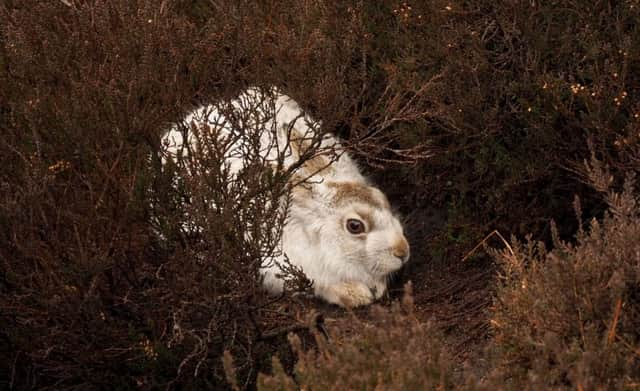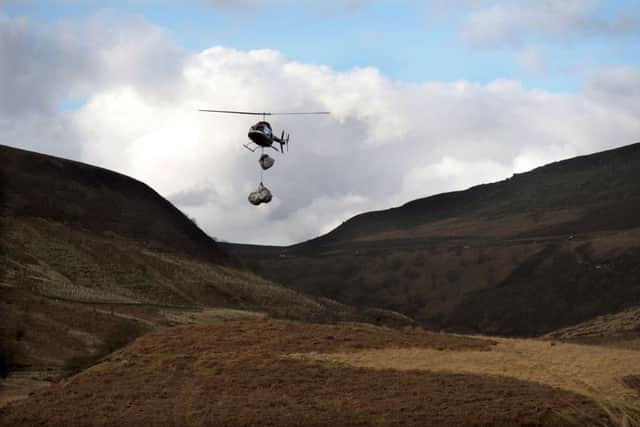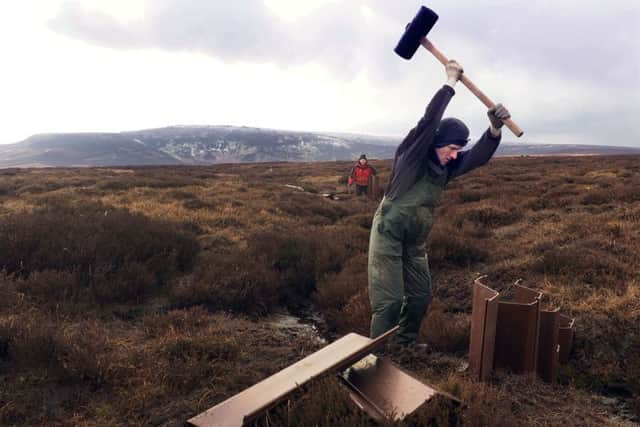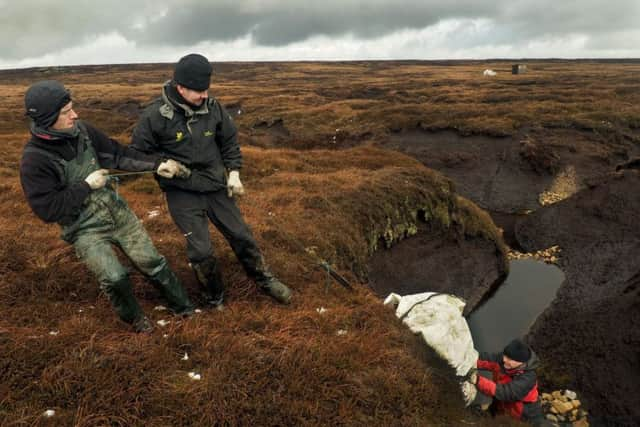How remote working gives Dark Peak a bright future


Steve is the ranger’s estates team supervisor for the National Trust in the Peak District. After an hour’s gentle off-road motoring through streams, over rocks and balancing on steep cliffs above the River Derwent, Steve and colleagues have another hour of walking up Coldwell Clough before their ‘day at the office’.
That is, a shed perched on a boggy moor half a kilometre into the sky. “We have to stake it down very carefully,” said Steve, squelching towards the team’s wooden shelter featuring its unique set of ‘Brontë windows’ salvaged from a long abandoned Jane Eyre film set.


Advertisement
Hide AdAdvertisement
Hide Ad“We were working on Kinder a few years ago and when we got there one winter’s morning we found the wind had picked up our shed and blown it 50 metres across the moor. We had to take it apart and put it back up again.”
Although the March daffodils are out in Sheffield, it’s still winter on Coldwell Clough. “It’s often 10 degrees colder where we work than down in the valleys,” said Steve.
“Sometimes in the driving sleet and snow you can’t lift your head up all day,” said Keith Hawkes. “It’s like little stones being thrown at you.”
“Rain never comes vertical, it’s always horizontal,” added Steven Hodson. “And walking through mud all day, there’s so much accumulated wetness you find it hard to move.”


Advertisement
Hide AdAdvertisement
Hide AdAlthough Keith is a relative newcomer to the Dark Peak, Steve and Steven have the best part of 60 years of service between them, in mist, snow, horizontal rain and acres of boggy moorland.
The team have planted trees, restored fences, built paths and over recent years installed over 10,000 small dams as part of the Moors for the Future Partnership’s MoorLIFE projects.
The dams are hand-built using stones, wood or brown plastic piling (as used in canal repairs), and aim to build up rain water on the moors in peat gullies, reducing flooding, improving water quality, cutting the potentially huge CO2 releases from peat erosion, and helping to prevent moorland fires.
They’re also doing their bit to return the Dark Peak to the kind of environment it had thousands of years ago, before industrial pollution, overgrazing and fires turned it into a landscape writers used to say was best avoided.


Advertisement
Hide AdAdvertisement
Hide AdNow moss, birds and the once-threatened bog rosemary plant are reappearing, and in warmer months the dam builders regularly see dragonflies on Howden Moors - unheard of in the past.
“It’s good to see everything improving,” said Steven. “Every day you see what you’ve achieved and think that’s benefiting future generations.”
“It’s actually a fantastic environment to work in,” said Steve. “There are buzzards and grouse and red kites, and mountain hares which probably never see anything for days, then they stay still as you approach them and explode away at the last minute.”
After warming up with sandwiches and coffee in the Brontë shed, Steve, Keith and Steven set to work. Tipping piles of stones into deeper gullies slows down water flow, wooden dams hold the streams back to a trickle, and the sheets of plastic piling have to be driven down into the peat to form a patchwork of ponds, where plants and wildlife settle and become new peat bogs storing carbon and keeping peat sediment on the hills.


Advertisement
Hide AdAdvertisement
Hide AdStanding next to the team hammering in the piling, the ground shivers, and nearby patches of snow turn out to be white-coated mountain hares scampering away to firmer ground.
Steve turned poetic. “It’s an inhospitable place, but as long as you dress properly it’s wonderful. Every day the clouds and the sunlight are different. There’s no sound other than the wind and the birds, and there’s no time up here. You feel this is how your forebears would have lived.”
The clouds darkened and the team buckled down in a horizontal snow flurry.
“The summer can be worse,” reasoned Keith. “The midges are horrendous.”
Visit http://nationaltrust.org.uk/darkpeak for details.